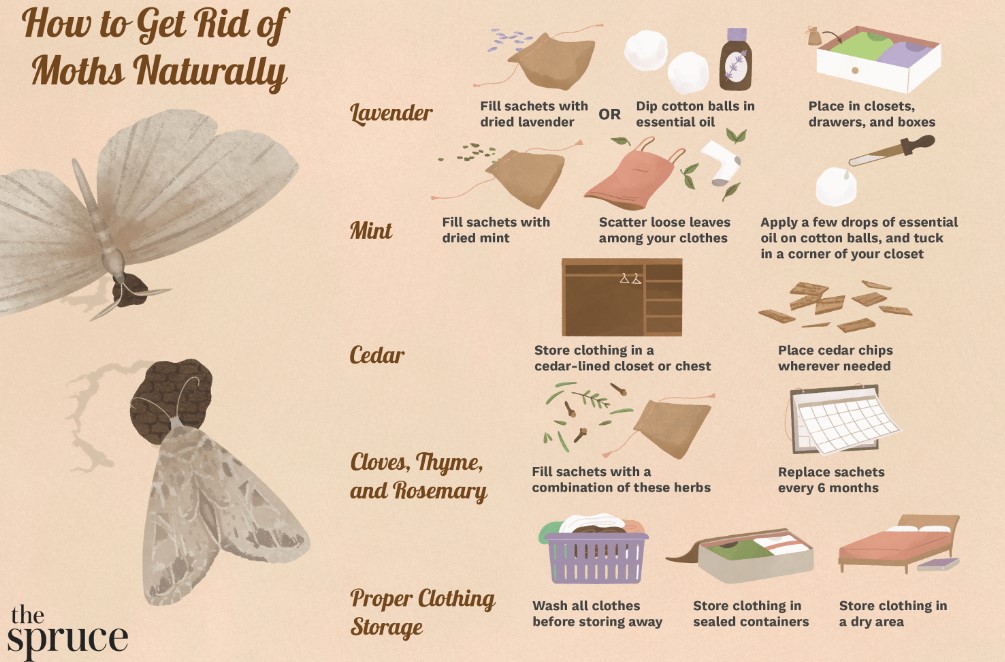BOURSESSENEGAL – Dealing with moths can be frustrating. These tiny pests not only invade your space but also threaten your clothes and food. Learning how to get rid of moths is essential for maintaining a clean and safe environment. In this comprehensive guide, we’ll explore various methods to eliminate moths, prevent their return, and keep your home free from these unwelcome guests.
Understanding Moths: Types and Behavior
Before diving into effective strategies, it’s important to understand the types of moths you may encounter. The most common types include:
Common Types of Moths
- Clothes Moths: These moths, like the webbing clothes moth and the casemaking clothes moth, feed on natural fibers such as wool and silk. They prefer dark, undisturbed areas like closets and attics.
- Food Moths: Pantry moths, including the Indian meal moth, infest food items. They lay eggs in grains, cereals, and dried fruits, leading to contamination.
- Garden Moths: These moths, such as the tomato hornworm, can damage your garden by feeding on plants. While they don’t invade your home, they can affect your outdoor spaces.
Understanding their behavior helps in creating an effective plan to eliminate them.
Signs of Moth Infestation
Identifying a moth problem early is crucial. Look for these common signs:
Clothes Moths
- Damage to Fabrics: Tiny holes in clothing, blankets, or upholstery indicate moth activity. Inspect items closely, especially those made from natural fibers.
- Cocoons and Larvae: You may find small, silken cocoons or larvae in your closets or drawers.
Pantry Moths
- Webbing: Look for webbing in food containers or corners of your pantry.
- Droppings: Small, dark, pellet-like droppings around food sources indicate a potential infestation.
If you notice any of these signs, it’s time to act.
How to Get Rid of Moths: Effective Methods
1. Cleaning and Decluttering
Start by cleaning your home thoroughly. Moths thrive in cluttered spaces.
Clothes Storage
- Wash and Dry: Launder clothes and bedding using hot water. Dry them on high heat to kill eggs and larvae.
- Vacuum: Vacuum closets, drawers, and carpets. Pay special attention to corners and crevices.
Pantry Organization
- Empty the Pantry: Remove all items from your pantry. Inspect each product for signs of moths.
- Discard Infested Foods: Throw away any contaminated food. Seal infested items in a plastic bag before disposal to prevent spreading.
2. Natural Remedies
If you prefer a natural approach, several remedies can help eliminate moths effectively.
Essential Oils
- Lavender Oil: Moths dislike the scent of lavender. Add a few drops of lavender essential oil to cotton balls and place them in closets and drawers.
- Cedarwood: Cedarwood is another effective repellent. Use cedar chips or blocks in your storage areas to deter moths.
Vinegar Solution
Mix equal parts of white vinegar and water in a spray bottle. Spray this solution on affected areas to help eliminate moths and their eggs.
3. Traps and Pheromones
Using traps can be an effective way to monitor and reduce moth populations.
Pheromone Traps
Pheromone traps attract male moths, helping to break the breeding cycle. Place these traps in closets and pantries to catch adult moths.
Sticky Traps
These traps capture any moths that land on them. Position them near areas where you’ve seen moths.
4. Chemical Treatments
If natural methods don’t yield results, consider chemical treatments. Always follow the manufacturer’s instructions and use them safely.
Insecticides
Look for insecticides specifically designed to target moths. Apply them in areas where you’ve noticed moth activity. Ensure proper ventilation during application.
Moth Balls
While not the most eco-friendly option, moth balls can be effective. Place them in storage areas, but be cautious as they contain toxic chemicals.
Preventing Future Infestations
Once you’ve dealt with moths, prevention is key to keeping them at bay.
1. Regular Cleaning
Maintain a routine cleaning schedule. Vacuum and dust regularly to eliminate potential hiding spots for moths.
2. Proper Food Storage
Store food in airtight containers. This practice prevents pantry moths from accessing their food sources.
3. Clothing Care
- Seasonal Rotation: Rotate your clothing seasonally. Make sure to clean items before storing them for long periods.
- Storage Bags: Use vacuum-sealed bags or airtight containers for long-term storage of clothing.
4. Monitor Humidity
Moths thrive in humid environments. Use dehumidifiers in damp areas like basements or attics. This will help deter moth infestations.
Conclusion
Knowing how to get rid of moths involves a combination of cleaning, natural remedies, traps, and preventive measures. By understanding their behavior, signs of infestation, and effective treatment options, you can reclaim your home from these pests. Regular maintenance and awareness will keep your environment moth-free and comfortable. Take action today, and enjoy a cleaner, safer living space!
REFERENCE : https://www.health.com/



